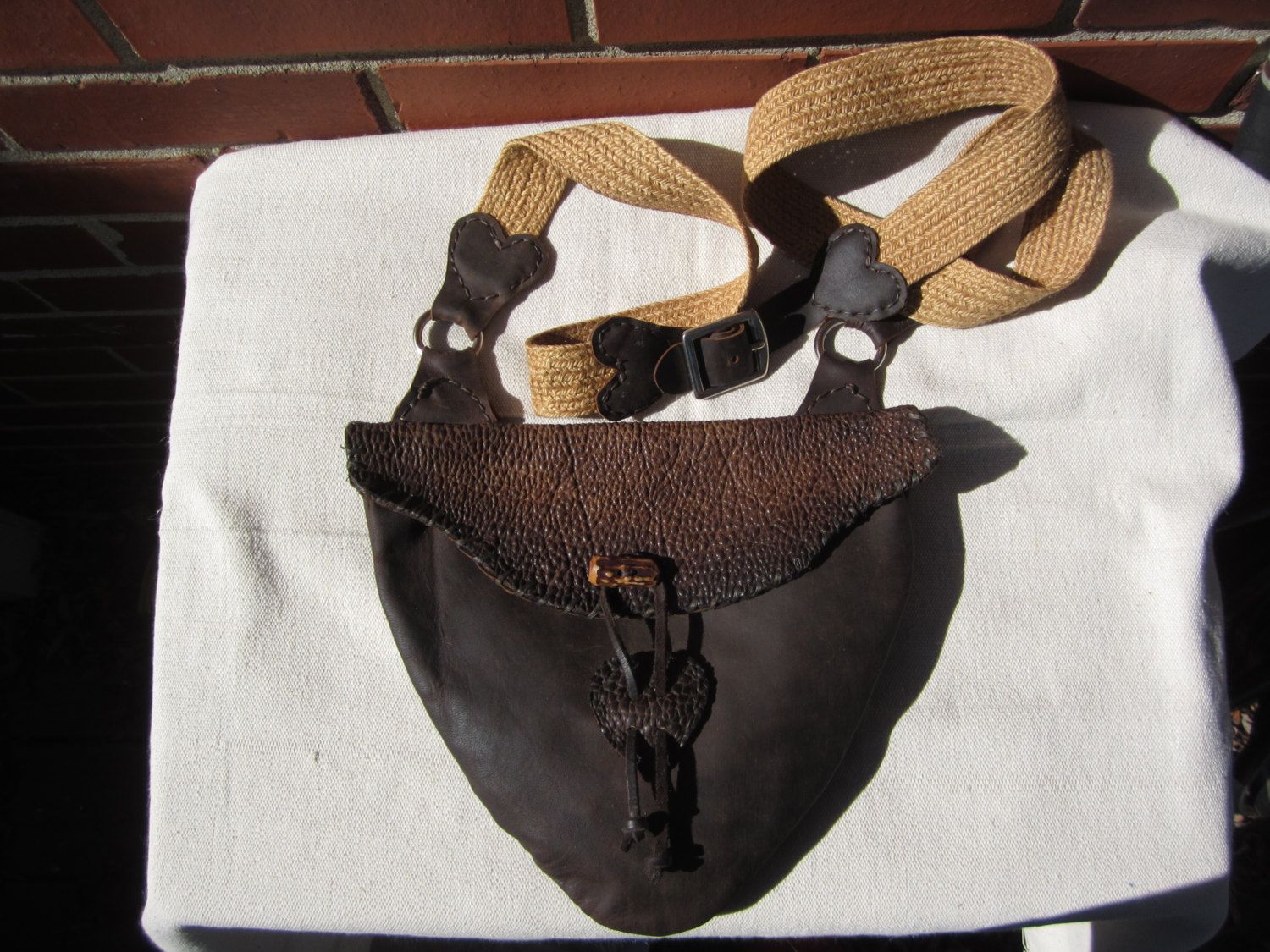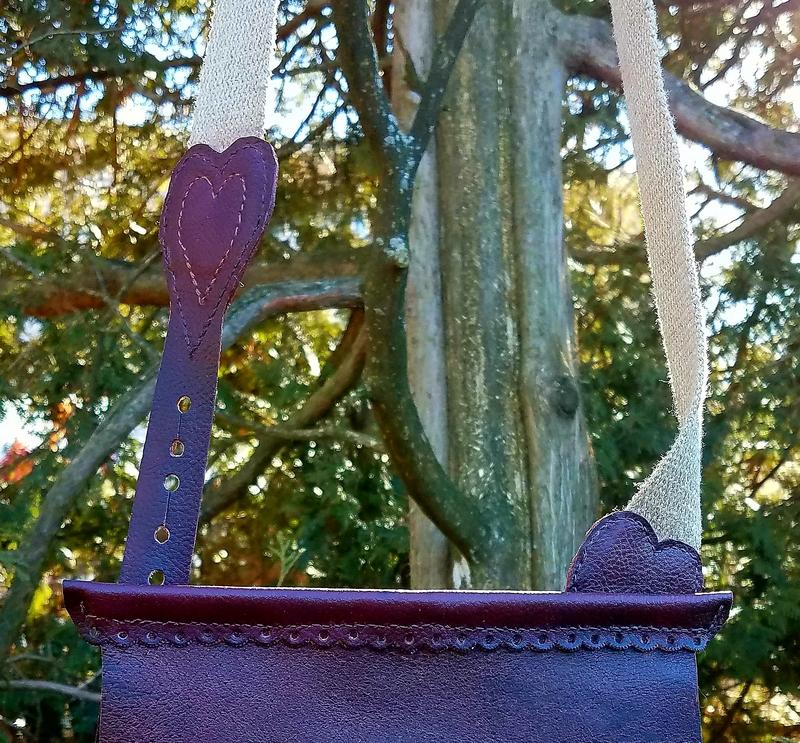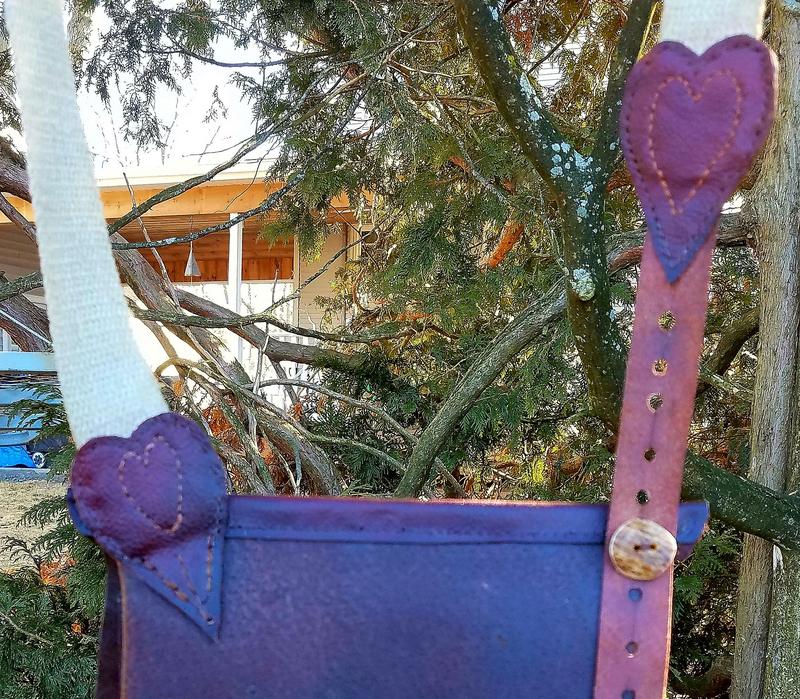Brokennock
Cannon
So, someone here contacted me about my 1st pouch made of pigskin and based on an original Virginia associated "Shot Pouch" owned by Wallace Gussler, that I've read about. He wanted basically the same pouch but with a hemp webbing strap, and, he mentioned a grandson who likes to shoot with him. I have not posted pics of it as I don't feel it belongs to me. So, I made the pouch, then remade the pouch (another story), and finished it before I received the web strap material. So, I decided to make him an extra pouch, one quite a bit simpler but not built to hold the contents so tight. Using a thin burgundy leather, antler button backed by a coconut shell button, and hemp thread. Here is what I came up with,
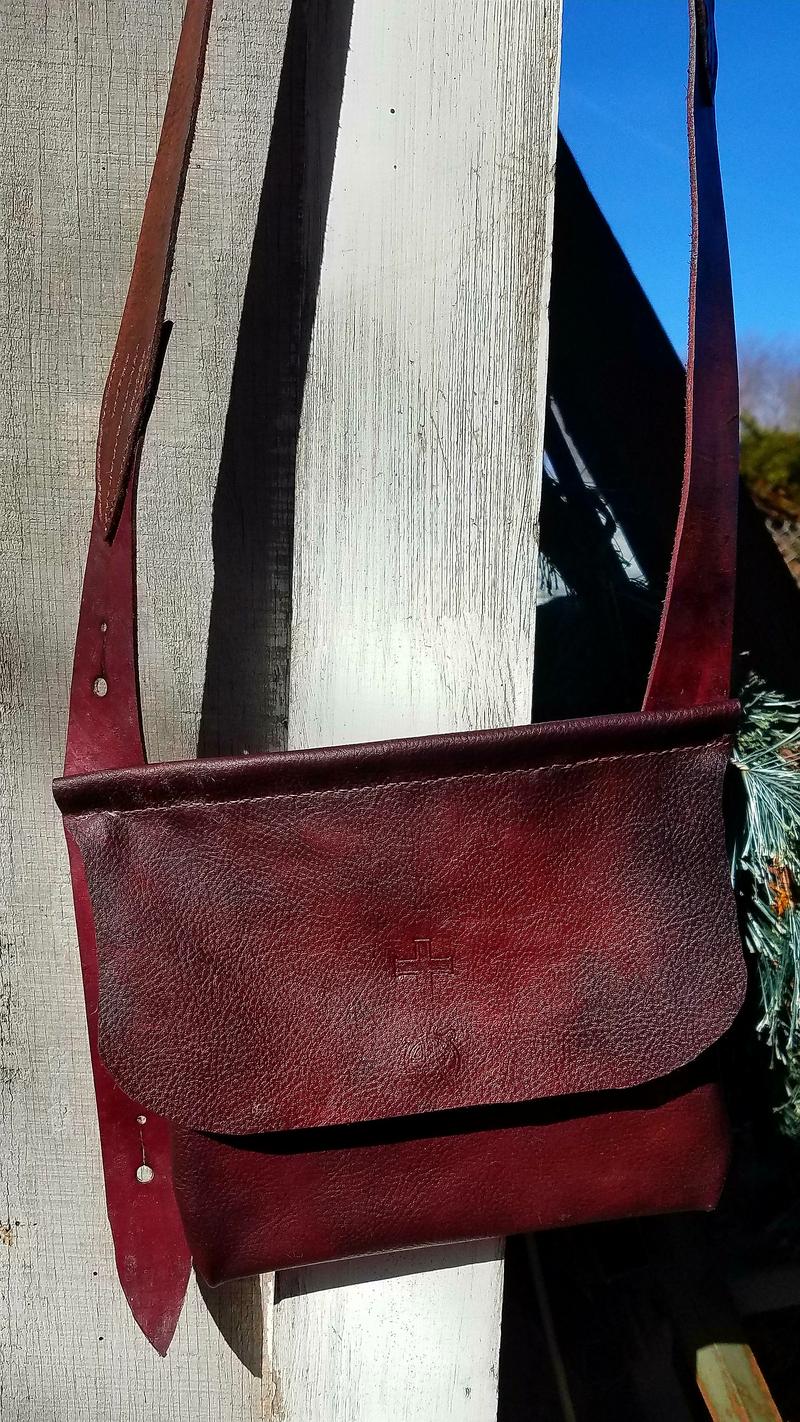
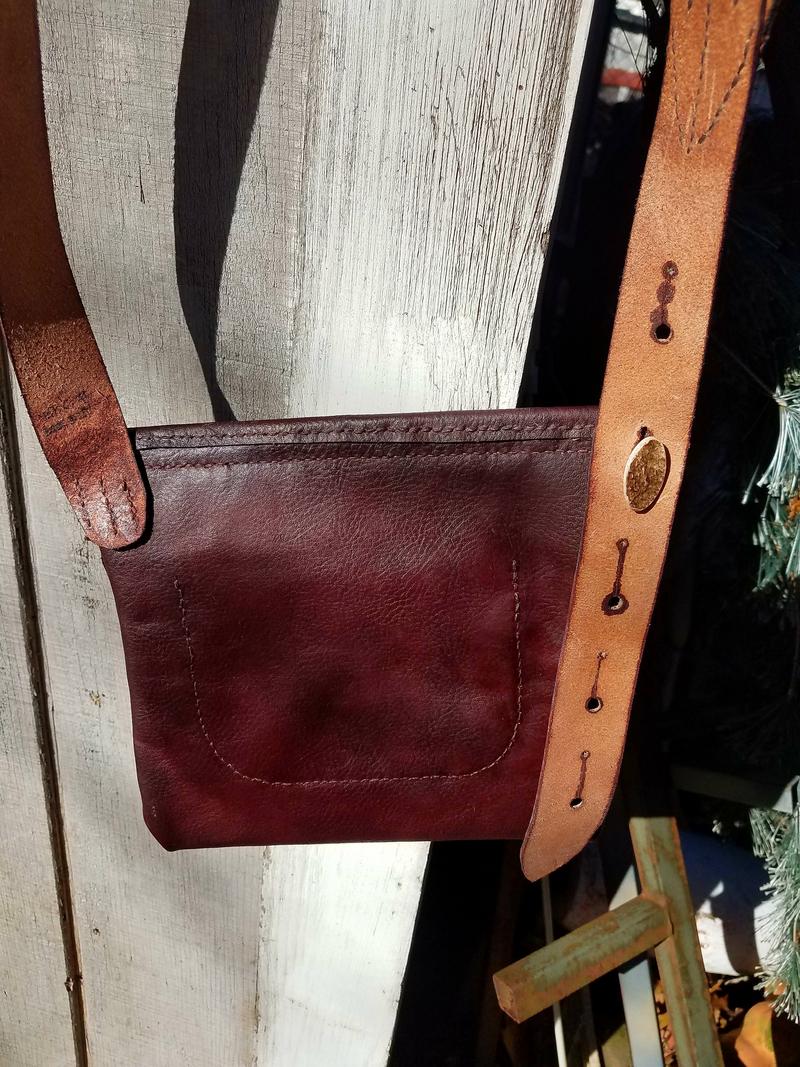
That's the "stud" type button from another topic.
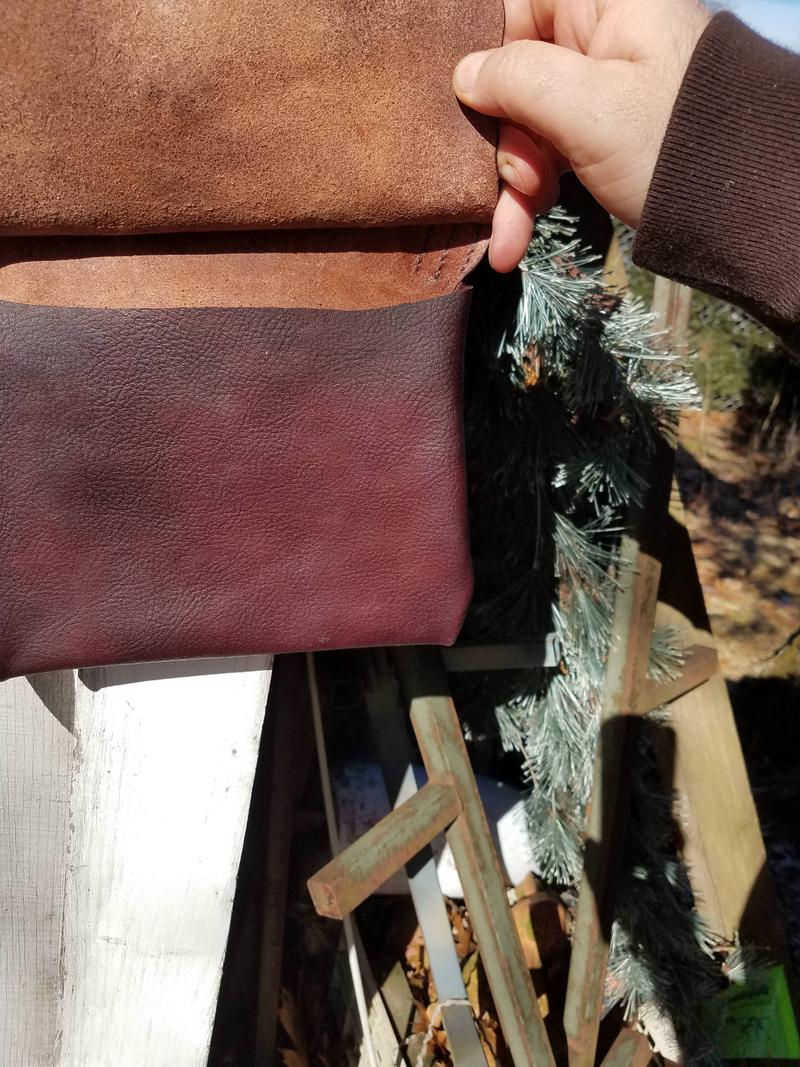
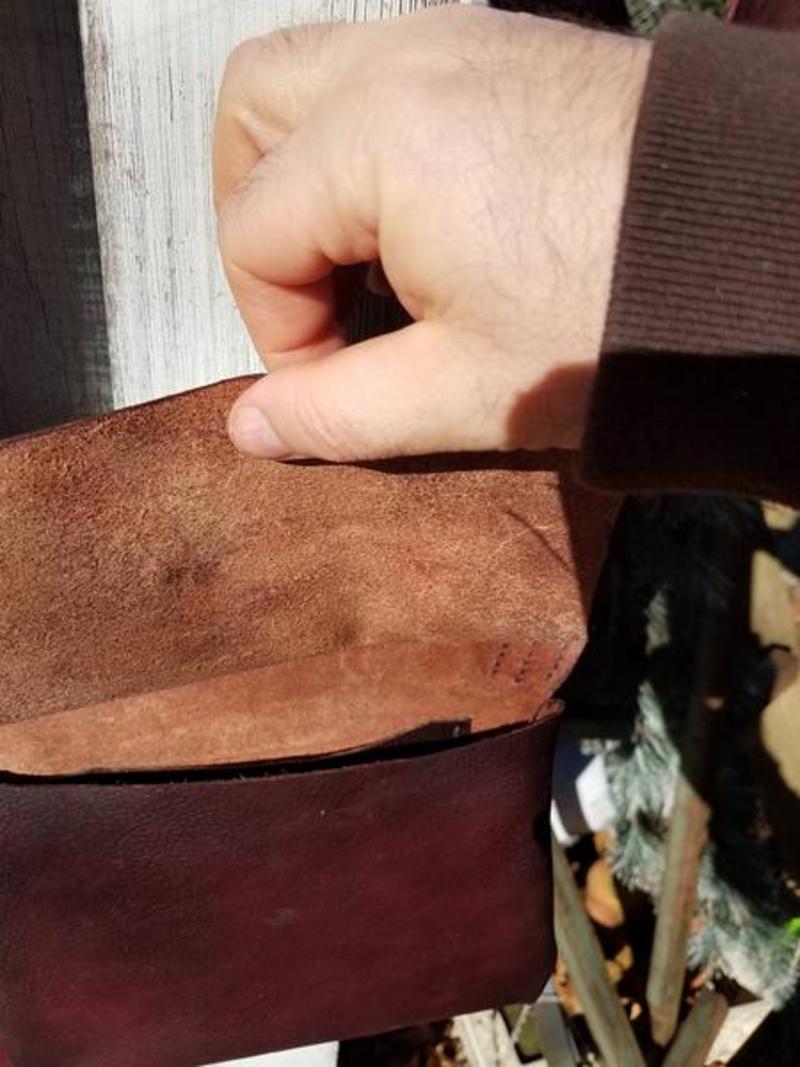
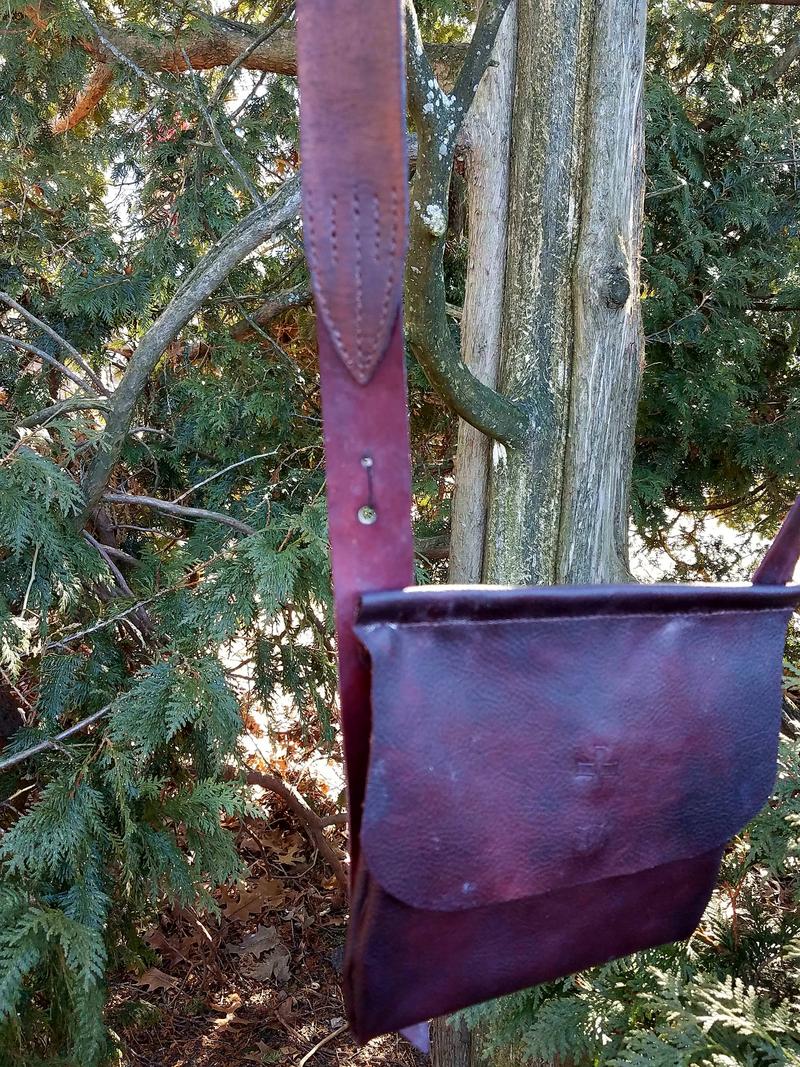
The thinner precut straps that Tandy sells are not long enough for the length strap the new owner would need, I already had almost a full length one in the wider 1.5" size from matching to the hemp webbing dyed with Eco-Flo "fudge brown," so I dyed a 1.25" strap with Feibings "burgundy" to more closely match the bag as the narrower strap would be the part directly attached to the bag. and came up with a plan to join them. Worked out okay.
I should not have tried to bleed color into the button holes.
Leather is treated with mink oil on the rough side and sno-seal on the finished side and the seams.
Thoughts? Questions?


That's the "stud" type button from another topic.



The thinner precut straps that Tandy sells are not long enough for the length strap the new owner would need, I already had almost a full length one in the wider 1.5" size from matching to the hemp webbing dyed with Eco-Flo "fudge brown," so I dyed a 1.25" strap with Feibings "burgundy" to more closely match the bag as the narrower strap would be the part directly attached to the bag. and came up with a plan to join them. Worked out okay.
I should not have tried to bleed color into the button holes.
Leather is treated with mink oil on the rough side and sno-seal on the finished side and the seams.
Thoughts? Questions?





